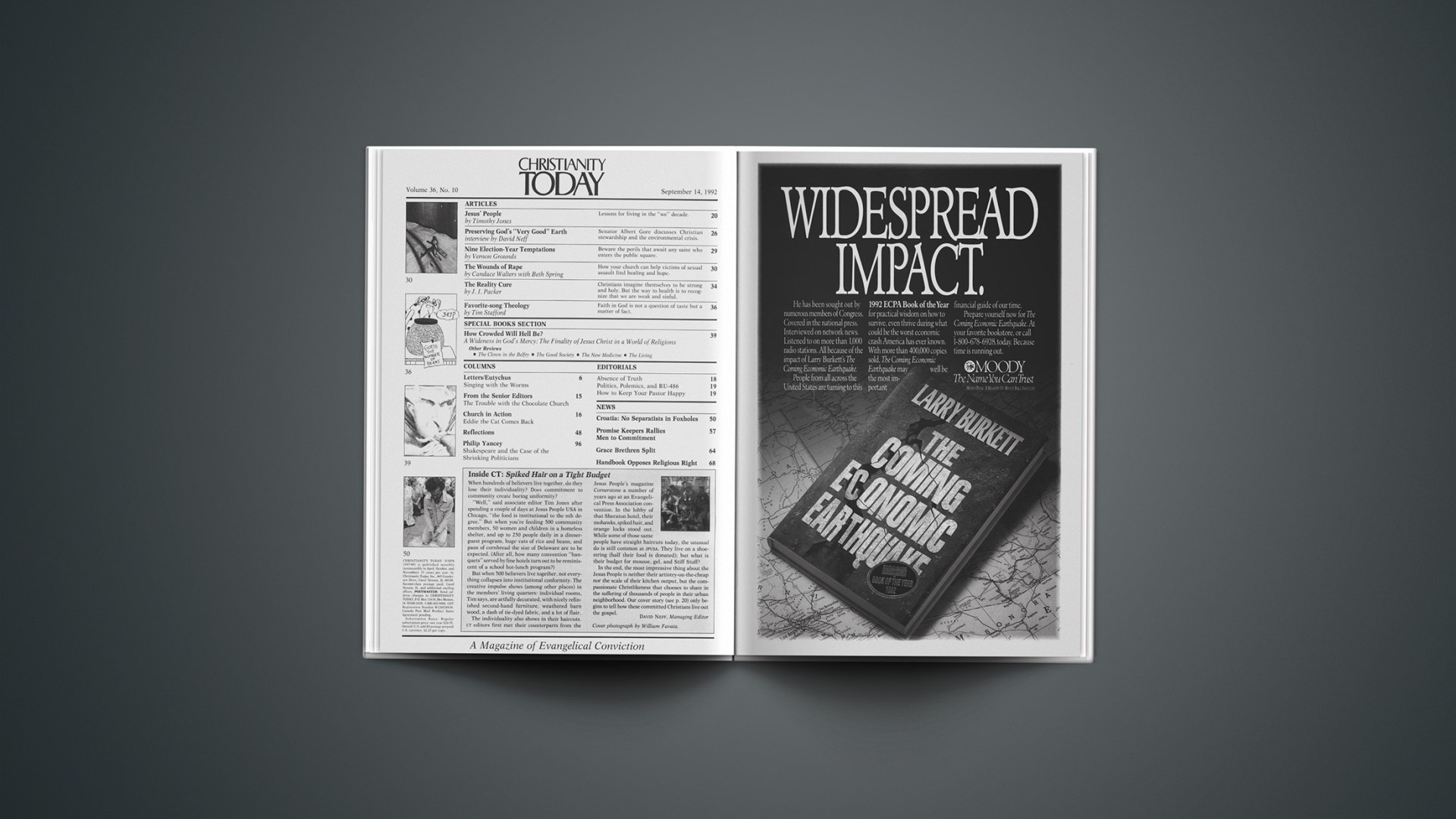When hundreds of believers live together, do they Jesus People’s magazine lose their individuality? Does commitment to community create boring uniformity?
“Well,” said associate editor Tim Jones after spending a couple of days at Jesus People USA in Chicago, “the food is institutional to the nth degree.” But when you’re feeding 500 community members, 50 women and children in a homeless shelter, and up to 250 people daily in a dinner-guest program, huge vats of rice and beans, and pans of cornbread the size of Delaware are to be expected. (After all, how many convention “banquets” served by fine hotels turn out to be reminiscent of a school hot-lunch program?)
But when 500 believers live together, not everything collapses into institutional conformity. The creative impulse shows (among other places) in the members’ living quarters: individual rooms, Tim says, are artfully decorated, with nicely refinished second-hand furniture, weathered barn wood, a dash of tie-dyed fabric, and a lot of flair.
The individuality also shows in their haircuts. CT editors first met their counterparts from the Jesus People’s magazine Cornerstone a number of years ago at an Evangelical Press Association convention. In the lobby of that Sheraton hotel, their mohawks, spiked hair, and orange locks stood out.
While some of those same people have straight haircuts today, the unusual do is still common at JPUSA. They live on a shoestring (half their food is donated); but what is their budget for mousse, gel, and Stiff Stuff?
In the end, the most impressive thing about the Jesus People is neither their artistry-on-the-cheap nor the scale of their kitchen output, but the compassionate Christlikeness that chooses to share in the suffering of thousands of people in their urban neighborhood. Our cover story (see p. 20) only begins to tell how these committed Christians live out the gospel.
DAVID NEFF, Managing Editor










